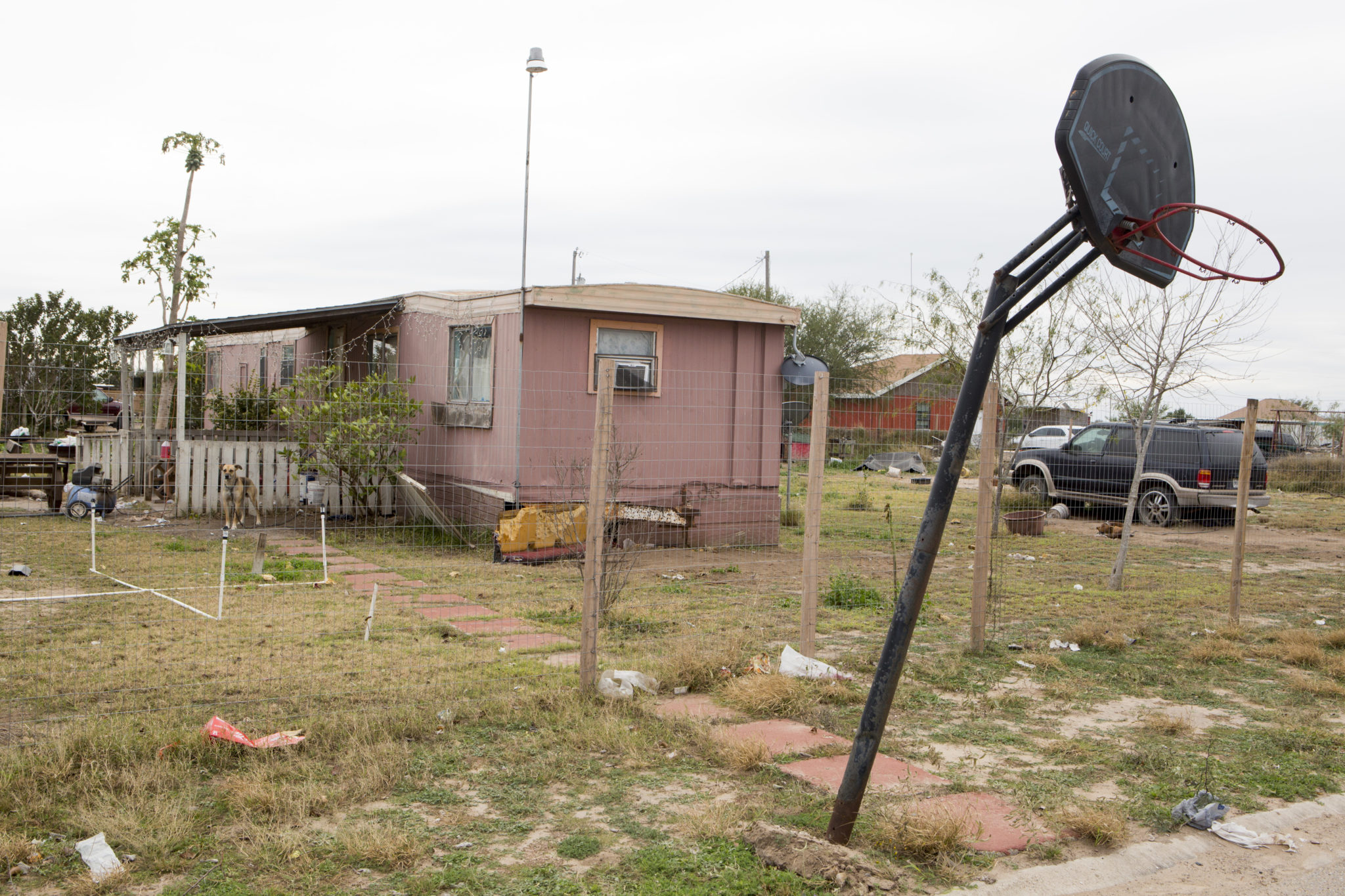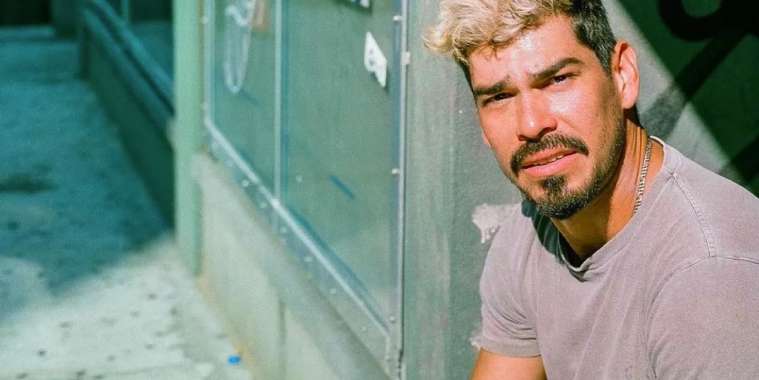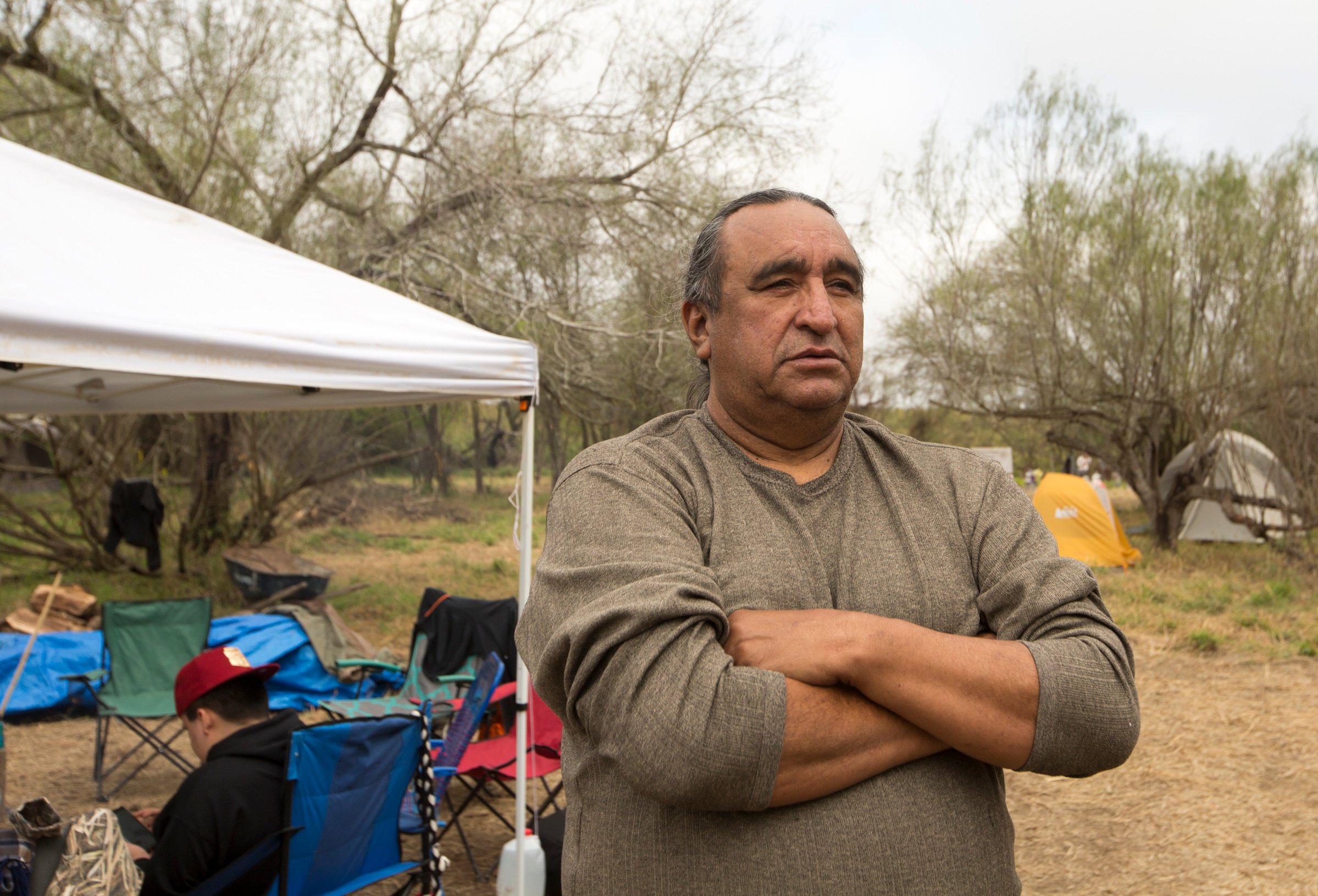
How Disaster Recovery Overlooks the Poor
Texas’ recent plan for allocating $5 billion in federal disaster recovery grants neglects the poorest people harmed by Hurricane Harvey, activists say.

A version of this story ran in the June 2018 issue.
Above: A basketball hoop stands at the edge of a colonia in Penitas.

Early in his career, David Hall came to see the Rio Grande Valley’s most impoverished communities as an important prism for viewing Texas’ civil rights struggles. Hall, who led Texas RioGrande Legal Aid (TRLA) for 42 years until his retirement last summer, moved to the Valley after law school in the 1960s to defend the rights of striking farmworkers. There he filed lawsuits to bring running water and basic sanitation to hundreds of the region’s poor colonias. Hall also sued to force changes at local water districts, requiring them to allow Mexican-American colonia residents to run for board seats.
In 2008, the colonias became a case study in how disaster magnifies inequality. After Hurricane Dolly surged through the Valley, families in poorly drained communities spent weeks wading through floodwaters that wouldn’t recede. On top of that, TRLA lawyers discovered that many of the region’s poorest homeowners were denied federal assistance for repairs. FEMA inspectors blamed the damage not on the storm, but rather on the homes’ DIY construction.
“These houses evolve from a shack until after 20 or 30 years, and they’ve got a brick home,” Hall told the Observer. “It’s self-help housing, built with materials like corrugated iron over time. Inspectors just looked at that and said, ‘That’s not storm damage, that was substandard before.’ Even though the storm had blown the roof off the place.”
Nearly a decade after TRLA sued on behalf of colonia residents, a federal judge in Brownsville concluded that FEMA violated federal law by using secret rules to deny assistance to thousands of families that needed it most. Some homeowners didn’t get checks from FEMA to repair damage caused by the 2008 storm until this year.
“Inspectors just looked at that and said, ‘That’s not storm damage, that was substandard before.’ Even though the storm had blown the roof off the place.”
Dolly was one of four major hurricanes to roil Texas in the 12 years before Hurricane Harvey crashed ashore in August, becoming one of the costliest natural disasters in U.S. history. Each storm brought more examples of how poor people are overlooked in disaster recovery, from failure to account for mass displacement after Katrina to sky-high denial rates for assistance after Ike and Dolly based on FEMA’s assertion that damage was due to “deferred maintenance.”
Advocates for poor Texans worry that state leaders, tasked with allocating billions in federal aid, haven’t learned from the past. For instance, Texas still budgets recovery dollars in a way that underestimates the needs of low-income renters and homeowners, according to Maddie Sloan, who directs disaster recovery and fair housing projects for Texas Appleseed. To determine how much in recovery grants each storm-ravaged area receives, the Texas General Land Office ignores FEMA data on damage claims below $8,000 for homeowners and $2,000 for renters. That means Texas’ recent plan for allocating $5 billion in federal disaster recovery grants, the first big chunk of recovery aid Texas has received so far, neglects the poorest people harmed by Harvey, Sloan contends.
GLO spokesperson Brittany Eck told the Observer the plan accounts for poor Texans in other ways and that federal rules forced the agency to use the current methodology; Sloan and other advocates say the different approach some states, like Florida, have taken following hurricanes shows otherwise.
To Hall, it’s part of the government legacy of underfunding recovery in the poorest parts of the state. “We’ve gotten all right at dealing with middle-class home repair and recovery after storms, but it’s still deplorable when it comes to low-income people,” he said.


